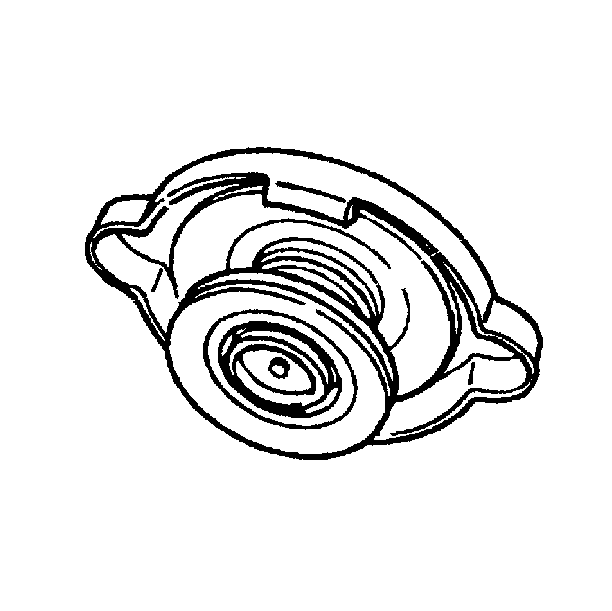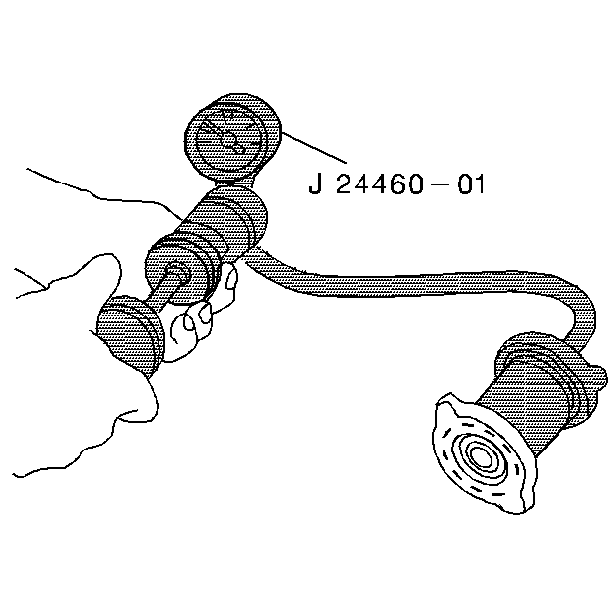Radiator Cap
Caution: As long as there is pressure in the cooling system, the temperature can be considerably higher than the boiling temperature of the solution in the radiator, without causing the solution to boil. Removal of the radiator cap while the engine is hot and the pressure is high will cause the solution to boil instantaneously and possibly with explosive force, spewing the solution over the engine, fenders, and person removing the cap. Under some conditions, the engine coolant is combustible.

The pressure-vent radiator cap allows a buildup of 103 kPa (15 psi) in the cooling system. This pressure raises the boiling point of the coolant to about 125°C (257°F) at sea level. Do not remove the radiator cap to check the engine coolant level. Check the coolant visually at the see-through coolant recovery reservoir. Add coolant to the reservoir when the system cools.
The radiator cap contains a blow-off or pressure valve. The cap also contains a vacuum or atmospheric valve. The pressure valve is held against its seat by a spring of predetermined strength. This valve protects the radiator by relieving internal pressure when the internal pressure exceeds the cooling system design limits. The vacuum valve is held against its seat by a light spring. The spring permits the valve to open in order to relieve vacuum created in the system when the system cools.
The radiator cap is designed to discourage inadvertent removal. In order to safely remove the cap from the radiator, rotate the cap slowly in a counterclockwise direction to the detent. Do not press down. Allow any pressure to release from the radiator. Press down on the cap. Continue to rotate the cap counterclockwise and lift the cap off the radiator.
A gasket is under the diaphragm spring at the top of the cap. Embossed on the cap is a caution against opening the cap. Arrows indicating the proper closed position are also embossed on the cap.

Check the seal of the filler cap and the operation of the pressure valve with a conventional cooling system testing kit.
